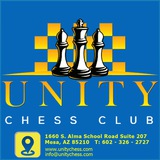How many of us would, certainly in a rapid game (and this was a rapid game) , automatically reply with the 'standard' 20...Rb8?
However, 20...Rb8? can be met by 21.Nxd6 Nf6 22.Bb3, which immediately creates the annoying possibility of 22.Nf7+.
However, 20...Rb8? can be met by 21.Nxd6 Nf6 22.Bb3, which immediately creates the annoying possibility of 22.Nf7+.
No worrying now over Nf7+ , anyway, as the rook on a7 is also covering that one!
Here's the point: by using the 7th rank, the rook has sidestepped the knight on d6 and reached an active position on the open e-file, even gaining a tempo by attacking the bishop on e3. Life can be so (deceptively) simple. After...
Of course, White has an overwhelming position, which could easily tempt you to underestimate Black's counterchances. Straightforward, simple development seems to be the obvious thing to do, so 18.Nh3 or 18.Ne2 suggest themselves, connecting the rooks as we are supposed to do. However, this would allow Black the one tempo he needs to contest the e-file with 18...Kg7 followed by ...Re8. Because of this, Gulko played the more precise text move, using the second rank to nip any counterplay in the bud.
It is not clear to me why Black chose this move instead of the natural 18...Kg7 . He was probably already in despair.
Today the first round of the Masters and Challengers will be played in the traditional Tata Steel Tournament in Wijk aan Zee. The 85th Wijk aan Zee tournament promises to be exciting: In the Masters young talents such as Gukesh, Erigaisi, Maghsoodloo, Abdusattorov, Keymer and Praggnanandhaa meet experienced top players such as Carlsen, Ding, Caruana, Aronian and So, and the Challengers also offers an interesting line-up.
